
Blackdown Tableland National Park
Just after a place called “Comet”, where explorer Leichhardt spotted the celestial body, is a place called “Dingo”. Who first spotted a dingo there, I don’t know! But nevertheless the humble Australian wild dog has got his own statue at the entrance of town.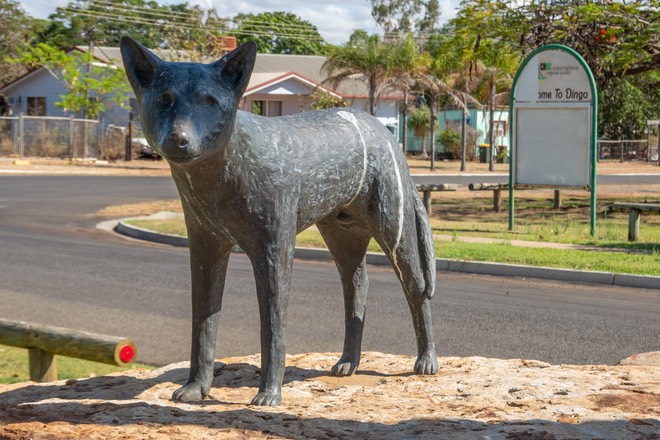
When we arrived, the caretaker of the small camping ground was absent. We heard later, that sadly he had to take his pet dog to Emerald Veterinarian Hospital after he had been attacked by another dog. I refrained from asking him, whether it was a dingo……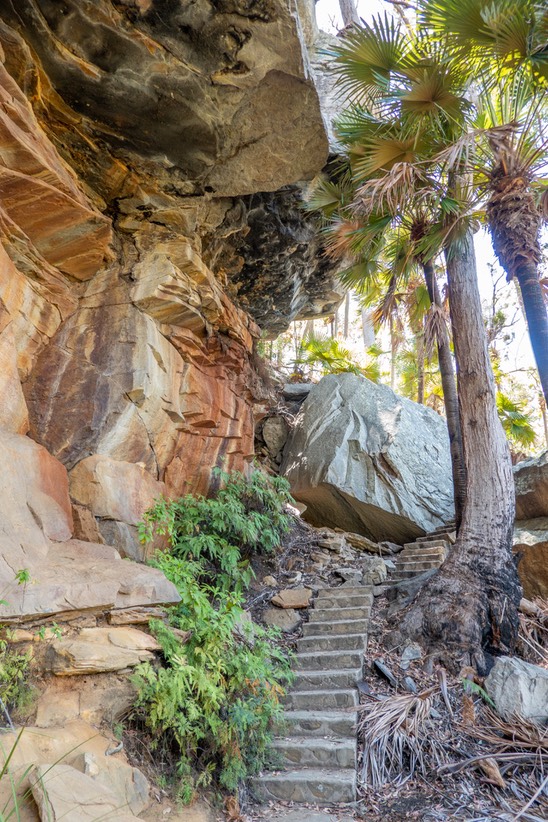
We took a short drive into the Blackdown Tableland National Park. The top of its 900m high sandstone plateau offers an amazing view over the vast plains of the Bowen Basin. From our walk to the bottom of a waterfall we looked out onto spectacular rock formations and vegetation. After climbing the 240 steps back to the top we took the loop road, a rough 4W-drive with lots of exposed rocks and sandy ditches. After 17km of this we were glad to get back onto a sealed road.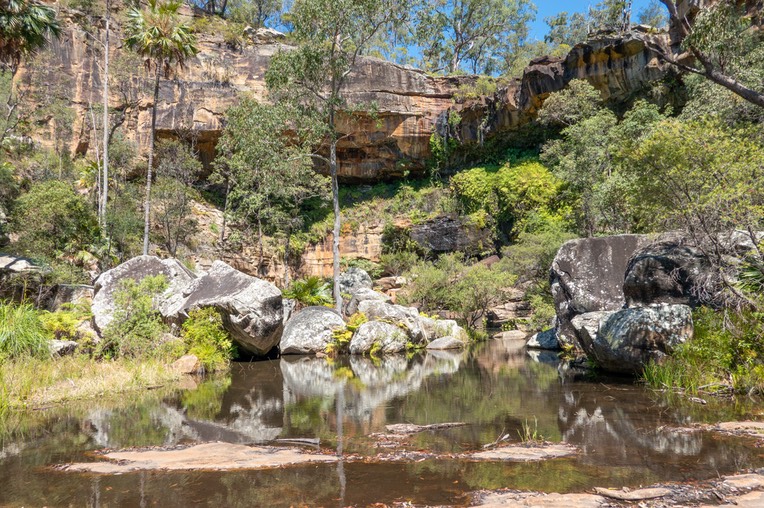
The Bowen Basin is part of the great Galilee Basin and contains huge layers of coal which would keep the local mines going for decades. All night I heard the coal trains passing. They were just as long, 2-3km, as the iron ore trains in the West. It’s a worrisome thought that to the north east in the Galilee Basin the Adani mine is proposed to be operating and deliver even more fossil fuel to Asia’s industries. 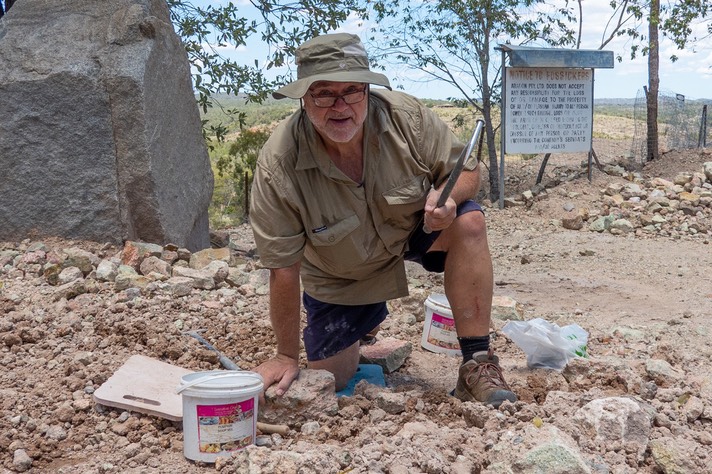
To the East of Dingo rises Mount Hay, known for volcanic rocks like Rhyolite and Thunder eggs. To break up our trip towards the East coast, we thought it would be fun to do some fossicking. There were pretty rocks galore, but to find a decent thunder egg was a dusty, hot and frustrating affair. We found a few little ones and took them with us to get them cut later in Sydney.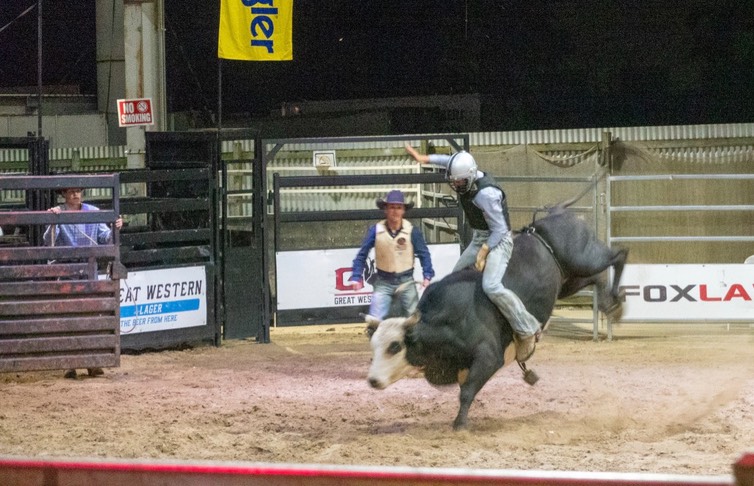
After travelling through the sparsely populated outback, arriving in Rockhampton and facing real traffic, shopping centres and multi-lane roads came as a shock! However, the old part of town is a little more sedate, and we arrived just in time for the Friday night Rodeo at the old Great Western Hotel. We had been there once before and enjoyed the atmosphere around the arena where the young country boys practise their skills on horses and bulls. This time the boys seemed younger and the beasts wilder. I cringed seeing some of the twists and falls, but the enthusiasm of the spectators around us was infectious. 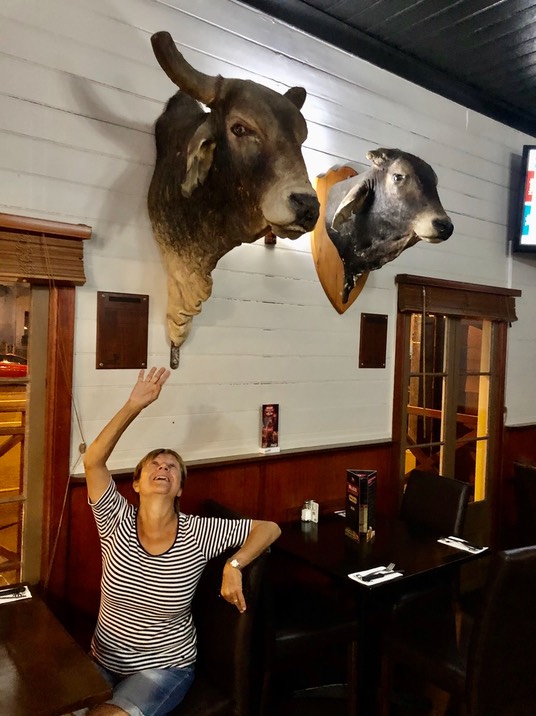 Later, sitting under the dull stares of bull heads inside the hotel, we had the best meal, consisting of barramundi en papillote cooked with lots of herbs and fennel, followed by a homemade caramel ice cream in a French waffle topped with salted caramel popcorn.
Later, sitting under the dull stares of bull heads inside the hotel, we had the best meal, consisting of barramundi en papillote cooked with lots of herbs and fennel, followed by a homemade caramel ice cream in a French waffle topped with salted caramel popcorn.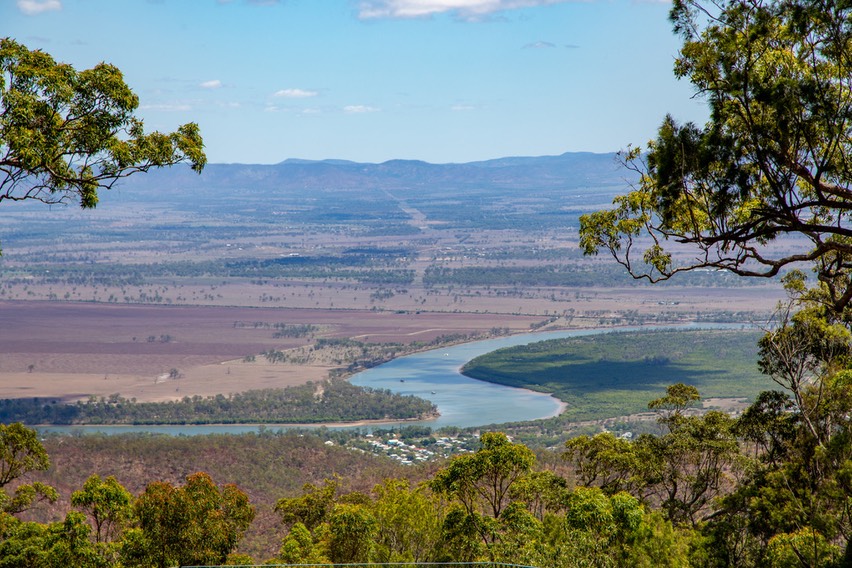
Rockhampton lies on the foot of Mount Archer and there are panoramic views from the top over the town, the Leichhardt River and the Berserker Mountain Range. On the bank of the river is Rocky’s botanical garden including a small Zoo. It’s main attraction is a chimpanzee baby, with two more to be born in the next couple of months, all from different mothers but the same playboy father! 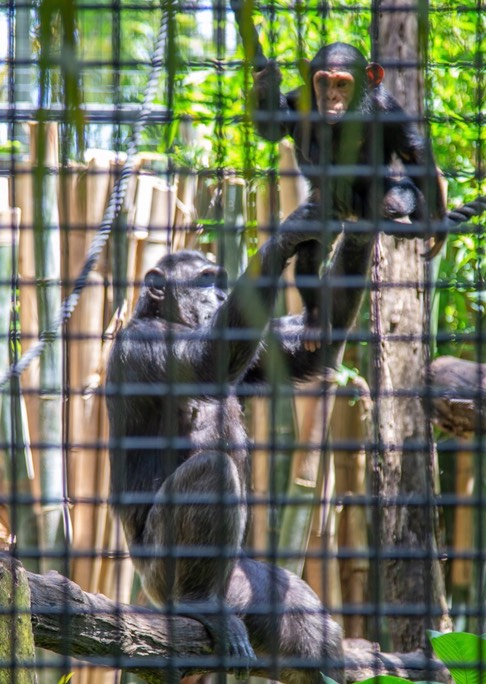
It’s well worth while visiting the Capricorn Caves 30km north of the city. A Norwegian farmer called Olson discovered them in the 19th century.
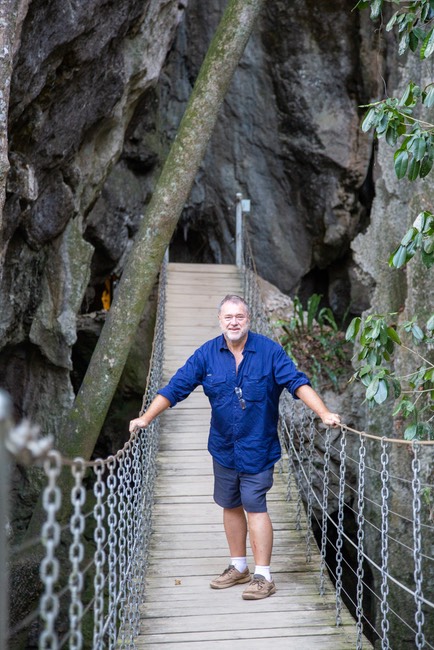
During the daytime, these above ground "dry caves" are inhabited by thousands of bent-wing micro bats. Accordingly, the floors are covered with bat faeces, luckily solidified on the walkways we used! Some of the caves have to be crossed via bridges and many can’t be safely accessed and are yet unexplored. On one of the bridges a wedding party in very odd gear, some with horns on their head others carrying laser swords, were having photos taken. Apparently their wedding vows in absence of a priest or celebrant were spoken in “Klingon”. Stranger things…! Being "dry caves" there are very little stalactites but many amazing rock features. 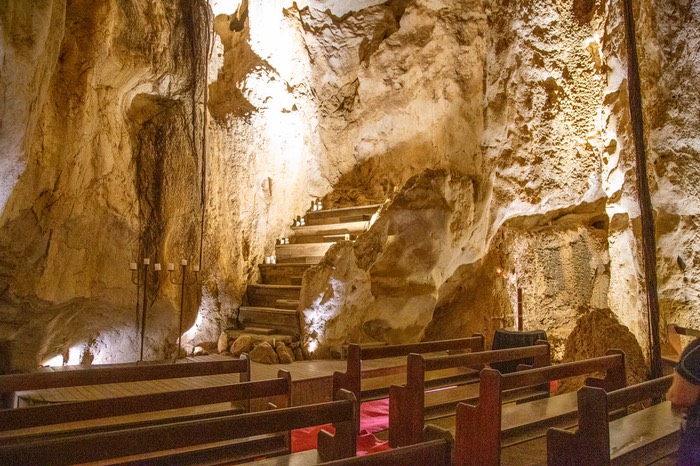 A cave full of intruding tree roots is aptly called “Belfry Cave”. The largest one, “Cathedral Cave", has been fitted out with candles and pews and is used for weddings and opera concerts. We heard an example of the perfect acoustic when our guide broke out in song for us, and then later by dimmed light played Leonard Cohens “Hallelujah”.
A cave full of intruding tree roots is aptly called “Belfry Cave”. The largest one, “Cathedral Cave", has been fitted out with candles and pews and is used for weddings and opera concerts. We heard an example of the perfect acoustic when our guide broke out in song for us, and then later by dimmed light played Leonard Cohens “Hallelujah”.
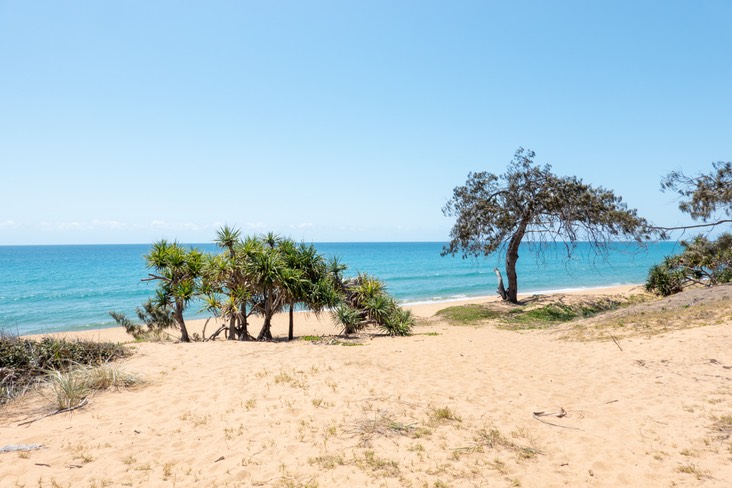
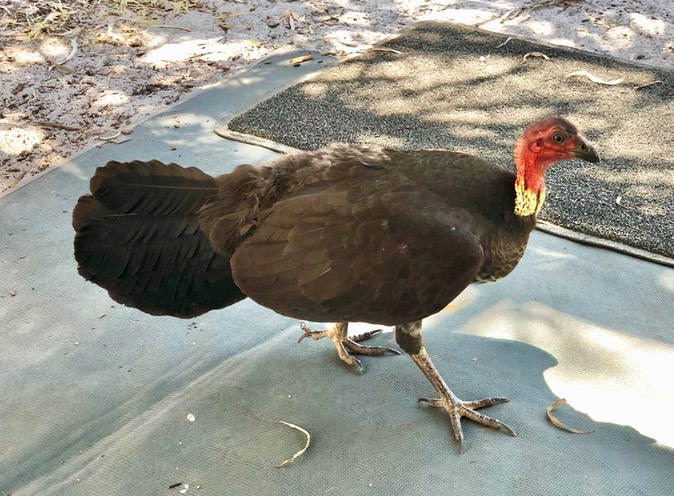
We are now just taking a rest from our ‘hard life’ at sleepy Agnes Water and the adjoining settlement called “1770”, named after the year Captain Cook landed here.
The camping area at Workmen’s Beach is like a little paradise. It has toilets and water, but otherwise is just set inside the natural bush area of gums and cabbage palms. A nice place to relax and watch the bush turkeys, Kookaburras and Kangaroos passing by.